#charles marie de la condamine
Text
Paris: The Intelligent Lottery
New Post has been published on https://ohparis.com/paris-news/2752/paris-the-intelligent-lottery/
Paris: The Intelligent Lottery
In a nation known for exceptional social services, one office often overlooked focuses on supporting lottery winners. Tasked with preventing the chaos that can come with sudden wealth, the FDJ Group (Groupe FDJ) is a crucial part of France’s national lottery system’s Commitment and Responsible Gaming Group. Led by Isabelle Césari, the group is dedicated to helping individuals transition smoothly to their new lives after hitting the jackpot, even earning Césari a spot as a TED talk speaker on “How to Support Lottery Winners”, highlighting their focus on shifting winners from mere pleasure to lasting happiness. For a more in-depth exploration of the French lottery system, here’s a engaging podcast link.
Although today the French lottery enriches everyday individuals and contributes to charitable causes, it wasn’t always intended for these purposes. Historically, state-sponsored lotteries aimed to provide income for the Crown but were often unreliable due to attempts to secure winnings for the state. These lotteries functioned like raffles, with tickets sold for years until profits were guaranteed through ticket sales. However, lacking an understanding of probability laws, mistakes were inevitable.
One notable mishap turned into a literary boon and a near calamity for the French monarchy. In 1728, during a dinner conversation, Voltaire and scientist Charles Marie de la Condamine exposed a flaw in the French lottery. This flaw allowed select ticket holders to manipulate the system and win consistently. Voltaire, La Condamine, and associates orchestrated a ticket-buying scheme, winning millions. Although the government cried fraud, the courts upheld their actions as legitimate within the lottery’s existing rules. The French government closed the lottery before Voltaire and his group could disrupt the country’s financial stability.
As a result of this incident, the French Lottery lay dormant for three decades, with the government resorting to minimal taxes. Recommendations to revive the lottery were dismissed to avoid further losses. However, in 1757, an escaped prisoner proposed a lucrative lottery plan to Joseph de Pâris-Duverney, a seasoned financier. Pâris-Duverney’s idea revitalized the lottery, emphasizing frequent drawings, guaranteed large winnings, and state oversight.
This audacious proposal marked a turning point in history, as the lottery’s rebirth owed much to the daring confidence and understanding of probability put forth by Giacomo Casanova, known for his daring escapades. Casanova advocated for state-controlled lotteries, underscoring the importance of risk in ensuring success.
Casanova’s legacy not only echoes through stories of his romantic conquests but also in the enduring impact of the lottery on French cultural heritage. France’s annual “Loto Du Patrimoine” cultural heritage lottery, stemming from Casanova’s ideas, contributes to restoring significant cultural sites, testament to the resilience of fortune and the enduring legacy of a man whose name symbolizes amorous pursuits.
0 notes
Text
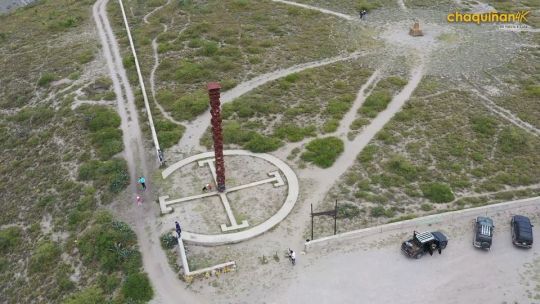
Catequilla
Você sabia que os povos pré-colombianos já possuíam noção da linha do equador? Pois é, muito antes da expedição geodésica francesa, os incas já sabiam que aquele lugar era especial.
Ao longo das terras que hoje compõem o Equador, antes mesmo da chegada dos colonizadores europeus, floresceu uma rica cultura indígena que demonstrava uma compreensão notável do cosmos. Entre os diversos vestígios dessa sabedoria ancestral, destaca-se o Sítio Arqueológico de Catequilla, uma joia que testemunha a genialidade dos povos pré-colombianos na região.
Catequilla, localizado nas proximidades de Quito, é mais do que um amontoado de ruínas antigas. Esse sítio arqueoastronômico, cujo nome tem origens na língua quíchua, é uma expressão da profunda ligação dos povos nativos com os céus. "Catequilla" pode ser interpretado como "aquele que segue a lua", um nome que reflete a cuidadosa atenção dada às observações lunares.
Nesse ponto específico, os antigos habitantes desenvolveram estruturas que não apenas se alinhavam com precisão aos solstícios e equinócios, mas também permitiam a observação meticulosa das estrelas do firmamento. A precisão com que esses povos antigos marcaram eventos astronômicos revela uma sofisticação científica notável.
O nome "Catequilla" sugere uma comunhão intrínseca com os corpos celestes. Os habitantes indígenas, imbuídos de um profundo respeito pela natureza, entendiam a importância das observações astronômicas em suas vidas. A interpretação do nome como "aquele que segue a lua" é uma janela para a veneração desses corpos celestiais.
Em Catequilla, podemos imaginar as noites antigas iluminadas pelas estrelas, enquanto os sábios observadores se dedicavam a estudar e compreender os padrões celestiais. Essa prática não apenas orientava as atividades cotidianas, mas também desempenhava um papel crucial nos rituais religiosos e no desenvolvimento dos calendários agrícolas.
Enquanto os povos nativos do Equador já mergulhavam nas complexidades celestiais, a Expedição Geodésica Francesa, no século XVIII, buscou entender a forma exata da Terra. Essa expedição, liderada por Charles Marie de La Condamine, resultou em contribuições significativas para a geodésia, mas vale ressaltar que os povos pré-colombianos já tinham uma percepção inata da linha do equador.
A genialidade dos povos nativos é evidenciada pelo fato de que, ao longo de séculos, conseguiram marcar a linha do equador com notável precisão em Catequilla, enquanto o moderno monumento "Metade do Mundo" está ligeiramente deslocado. Essa discrepância destaca a compreensão intuitiva e acurada que essas culturas tinham em relação à geografia terrestre, muito antes das ferramentas modernas de medição.
Em última análise, Catequilla representa um testemunho da sabedoria ancestral que permeava as sociedades pré-colombianas, refletindo uma profunda relação entre os povos indígenas e os mistérios celestiais que continuam a fascinar e inspirar. O Sítio Arqueológico de Catequilla é mais do que ruínas antigas; é um portal para uma época em que as estrelas eram os guias dos povos que habitavam as terras equatoriais.
0 notes
Photo





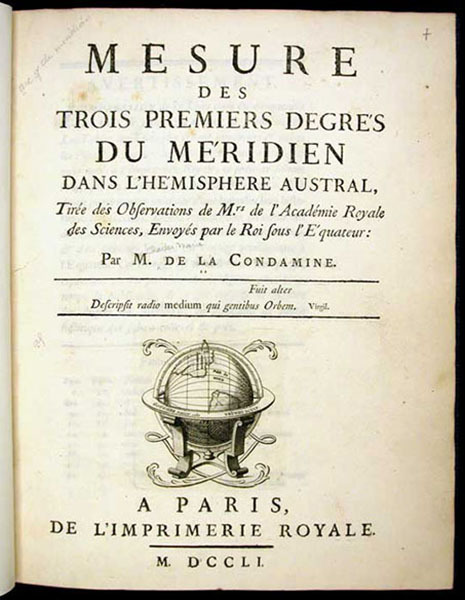
Charles-Marie de La Condamine – Scientist of the Day
Charles-Marie de La Condamine, a French mathematician and astronomer, was born Jan. 27, 1701.
read more...
#Charles Marie de La Condamine#geodesy#histsci#histSTM#18th century#history of science#Ashworth#Scientist of the Day
22 notes
·
View notes
Text
CURIOSIDADES DEL ARTE
Hoy Lunes, elegí hablar sobre las curiosidades del arte, esta semana la temática de curiosidades es "La primera" cosa registrada hasta ahora, y claro, está relacionado con el dibujo y lo artístico, ¡así que a leer!.
El primer dibujo.
Tiene de forma de zigzag y fue grabado hace más de 400.000 años en una concha hallada en Indonesia.
Así es el primer dibujo de la humanidad, según afirma un nuevo estudio publicado por un equipo internacional de arqueólogos en la revista Nature. Y, explican, el autor de este garabato fue probablemente el Homo erectus, ancestro de los seres humanos. Es decir, el trazo fue realizado unos 300.000 años antes de que los primeros miembros de nuestra especie comenzaran a hacer dibujos. El Homo erectus salió de África hace dos millones de años y pudo haber llegado hasta la isla de Java, antes de extinguirse hace aproximadamente unos 140.000 años.
El primer borrador y lápiz del mundo.
El 1er borrador de mundo. Antes de que los Colonos descubrieran el caucho, se utilizaban migajas de pan para borrar trazos de grafito, así como lo leíste, usaban migajas de pan como borrador. Esto cambió luego de que los colonos tuviesen el primer contacto con la materia prima del caucho o Látex, los árboles de siringueira, que es usada en la fabricación de la goma natural, fue en Brasil, en el margen del río Amazonas. Charles Marie de La Condamine, que formaba parte de una expedición francesa, vio a los indígenas haciendo objetos con la savia de la siringueira y decidió llevar el producto para investigarlo. En esa época, nadie se interesó por la materia prima. Un hecho accidental, protagonizado por el ingeniero inglés Edward Naime en 1770 cambiaría definitivamente esta práctica. Tomó distraídamente un trozo de goma creyendo que era miga de pan, y comenzó a borrar, después la práctica de usar esta sustancia se extendió.
El 1er lápiz del mundo. Durante la edad Media el papel se marcaba con tinta utilizando una especie de brocha llamada pencilium = pincel, estilo. Uno de sus primeros inventores fue el pintor y grabador alemán Alberto Durero en el primer tercio del siglo XVI. Se trataba de una barrita de plomo y cierta aleación de estaño llamada punta de plata, cuya marca se borraba con migas de pan. Se sabía ya desde 1775 que el grafito se trataba de una clase de carbón. Más tarde se le fue dando forma hasta conseguir una barrita manejable que se envolvía en cuerda que se desenrollaba según se iba gastando; no se le sacaba la punta, como lo hacemos ahora.
La primera escultura.
Un objeto de piedra de 400.000 años de antigüedad, descubierto en Marruecos, puede ser la primer escultura del mundo.
Eso es lo que afirma un especialista en arte prehistórico que asegura que la piedra muestra claros signos de modificaciones realizadas por humanos.
El objeto, de unos seis centímetros de largo, tiene la forma de un humano, con estrías que sugieren el cuello, los brazos y las piernas. Se encuentran restos de una sustancia roja en su superficie, que pueden indicar la presencia de pintura. La piedra fue hallada unos 15 metros debajo de la superficie de una terraza erosionada a orillas del "río Draa", cerca de la ciudad marroquí de Tan-Tan. "La piedra tiene algunas modificaciones que son importantes", dijo el experto a la BBC.
La primera pintura.
La composición incluye dos jabalíes y cuatro búfalos enanos en torno a los cuales pueden verse hasta ocho figuras mucho más pequeñas que parecen humanas. Algunos de ellos parecen acechar a sus presas con lanzas o cuerdas. La datación de los depósitos minerales acumulados sobre tres de las figuras de animales indica que se pintaron hace al menos 43.900 años. A juzgar por el color y su grado de desgaste los científicos piensan que todas las figuras se hicieron a la vez y por lo tanto componen la narración de una historia, la primera de la que hay constancia. El único autor posible de esta sorprendente obra es el Homo sapiens, nuestra propia especie, que llegó a estas islas del sudeste asiático hace entre 40.000 y 50.000 años. “Este es el arte figurativo más antiguo que existe y pensamos que además es el ejemplo más antiguo de obra narrativa y tal vez de espiritualidad”, explica el arqueólogo Adam Brumm, de la Universidad Griffith (Australia) y coautor del hallazgo. Hace un año su equipo ya encontró en la isla de Borneo una imagen de un animal ensartado realizada hace 40.000 años, una antigüedad que hizo palidecer la de las obras cumbre del arte rupestre europeo situadas en España y Francia.
4 notes
·
View notes
Text
Jorge Juan, el español que midió la Tierra
Jorge Juan, el español que midió la Tierra
Jorge Juan, el español que midió la Tierra
El militar y científico Jorge Juan fue el primero en medir la longitud del meridiano terrestre en una expedición naval realizada entre 1736 y 1744 estando protegido por el Marqués de Ensenada, que le envió como espía Inglaterra a conocer las técnicas de construcción naval de este país.
La aventura de Jorge Juan comienza casi por casualidad en 1734,…
View On WordPress
#17436#ASTRÓNOMO#CARLOS III#CHARLES MARIE DE LA CONDAMINE#EXPEDICIÓN#INSÓLITO#JORGE JUAN#LA TIERRA#LOUIS GODIN#MEDIR#NOTICIA
0 notes
Photo

Cambiamenti climatici e assicurazioni, il caso Australia La notizia non ha avuto una grande eco sui media internazionali e nostrani, eppure vale senza dubbio la pena riprenderla con il dovuto risalto.
#Roma#Stati Uniti d&039;America#etica#Australia#riscaldamento globale#alluvione#Flickr#cambiamento climatico#Ciclone#Charles Marie de La Condamine#Deloitte#Queensland#Rischio reputazionale
0 notes
Photo


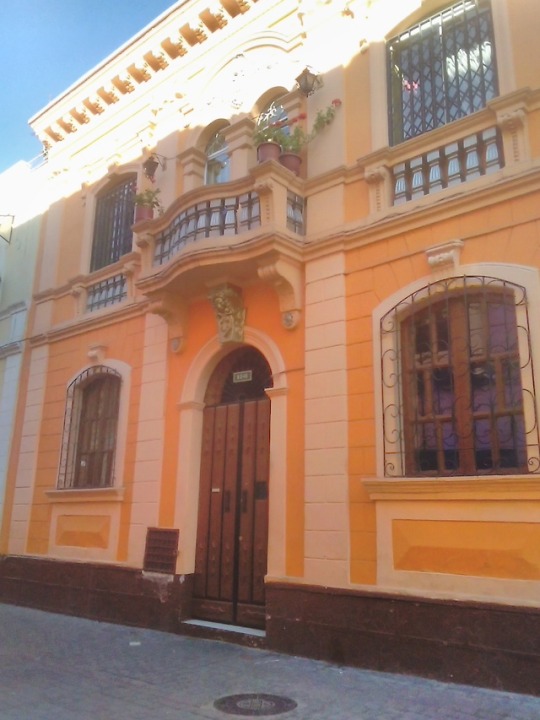



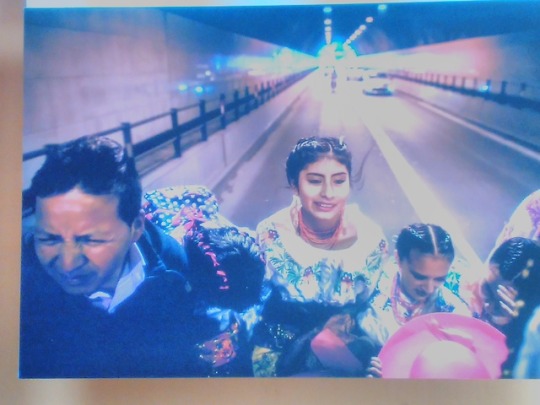
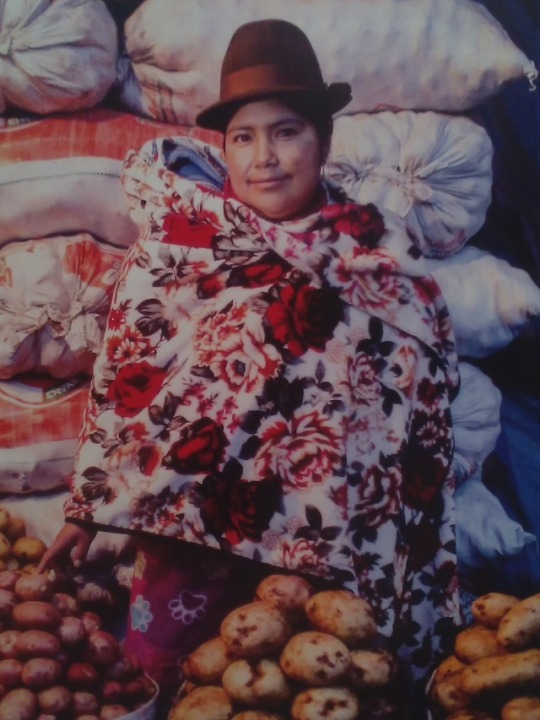

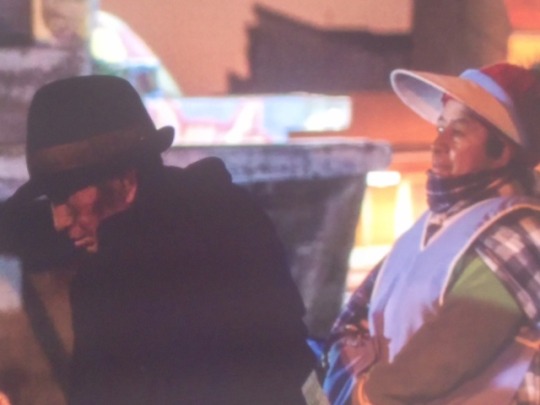
passage à Quito
explications d'images
J'avais laissé -un peu à contrecœur - mes amis Marianne et Nico à Popayan dans le département du Cauca, Colombie. Nico s'était cassé un talon et il attendait de reprendre des forces avant de retourner à Bogotá pour s'envoler en Europe. Ils étaient bloqués dans cette ville joliment ennuyeuse pendant encore 3 semaines. On avait bu un dernier verre. Sur 4 mois en Colombie, nous avions au moins voyagé ensemble pendant 6 semaines. A 23 heures je prenais un bus de nuit pour la frontière avec l'Equateur. J'avais donc un petit pincement au cœur quand je les ai quitté tandis que Nico levait sa canne en guise d'adieu et que Marianne souriait tristement.
Pour éviter tous risque d'attaque, comme à l'époque du Grand Ouest, les bus des différentes compagnies s'attendaient à la sortie de la ville et partaient en convoi de 6 ou 7 véhicules. Nous sommes arrivés tôt le matin à Ipiales, la dernière ville avant la frontière de L'Equateur, sans s'être fait dépouillés par des bandits de grands chemins.
On m'avait dit qu'avec la masse de vénézuéliens qui tentaient de rentrer dans ce pays, j'aurai plusieurs heures d'attentes à la douane. Ce ne fut pas le cas. En moins d'une heure je remplissais les formulaires, passais la douane avec des dollars car la monnaie du pays, le sucre ( du général Sucre, libérateur de l’Équateur) avait été remplacée dès les années deux miles, pour éviter des taux d’inflations vertigineux). Un taxi m'emmena au terminal de Tulcan ou à peine descendu du véhicule je sautais dans un bus pour Quito. 4 heures de routes plus tard, à travers de magnifiques paysages de la Cordillère des Andes, j'arrivais enfin dans la capitale de L'Equateur.
J'y restais 8 jours dans un hôtel vieillot dont la patronne bien en chère avait un sourire énorme et le cœur généreux. J'avais comme voisin de chambre un colombien de Bogotá qui cherchait du boulot et une famille nicaraguayenne qui fuyaient les émeutes de Managua et la répression par le président Daniel Nortega,
Quito
Je ne sais pas encore quoi en dire.
Pour que vous fassiez vous même une idée de cette capitale, je vous envoie donc des photos que j'ai divisées en 4 groupes.
1) la ville, les marchés, un peu d'architecture. La ville est beaucoup plus belle que ce que j'en montre. N'hésitez surtout pas à la visiter. C'est une des plus belles villes d'Amérique du Sud, patrimoine mondiale de l'humanité.
2) Cette Amérique du Sud n'existe pas sans ferveur religieuse (que cela nous plaise ou pas). Il y a donc quelques images à ce sujet. Moi je les aime bien.
3)Sous Louis XV, en 1735 une expédition emmené par l'académicien des sciences, Charles Marie De la Condamine arrive à Quito pour mesurer et définir le milieu du monde, la mitad del mondo. A l'aide de la seule triangulation, ils mesurent le point où passe l'Equateur. A l'époque il n'y avait pas de calculatrice et encore moins de GPS et pourtant il ne se sont trompés que d'une centaine de mètres. Un exploit. A dix km de Quito il y a donc le monument le plus célèbre de l'Equateur et un joli musée à ciel ouvert "la mitad del mondo".
4) j'ai redécouvert un peintre Guayasamin (je crois qu'on a tous déjà vu un de ses tableaux) dont j'ai visité la chapelle de l'homme située sur les hauteurs de Quito.
La phrase en espagnol de Guayasamin que je mets en exergue, de ses photos, peut se traduire ainsi :
"Peindre est une forme de prière en même temps qu'un cri.
Et la plus haute conséquence de l'amour
et de la solitude."
Un de ses tableaux s'intitule : "La edad de la ira" "l'ère de la rage"
Pour mieux comprendre Guyasamin(1919-1999) rappelons nous qu'il peint une grande partie de son œuvre à une époque ou l'Amérique du Sud est sous le joug des dictatures militaires.
J'espère que vous ne serez pas indifférents à quelques une de ses images. Bonne visite.
Et surtout n'oubliez pas, prenez soin de vous.
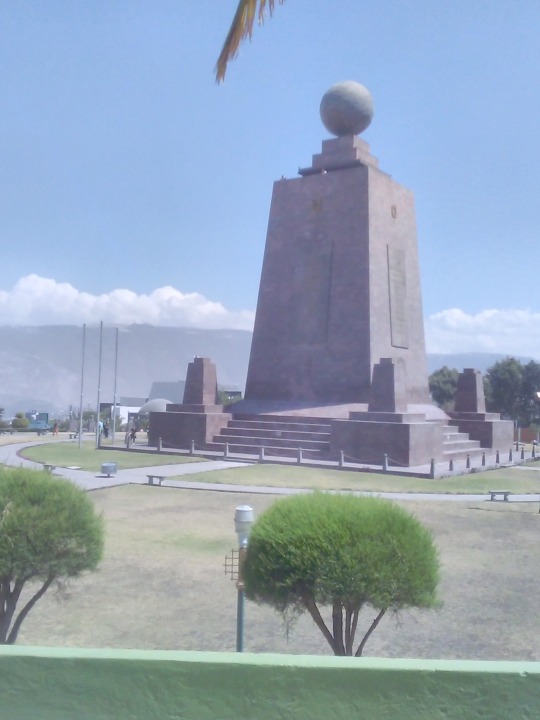
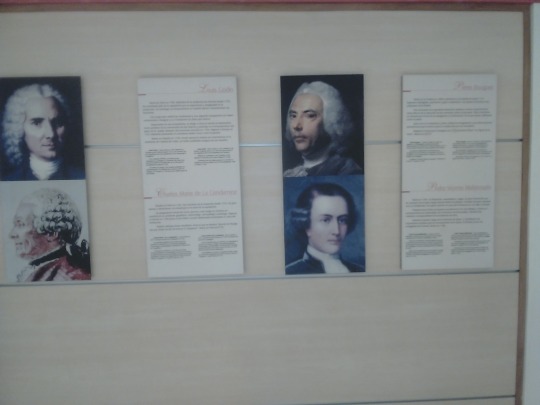
Expédition française de 1735 emmené par Charles Marie de la Condamine. Il mesureront la moitié du monde, l’Equateur.

Photo prise depuis le haut du monument de la “mitad del modo”


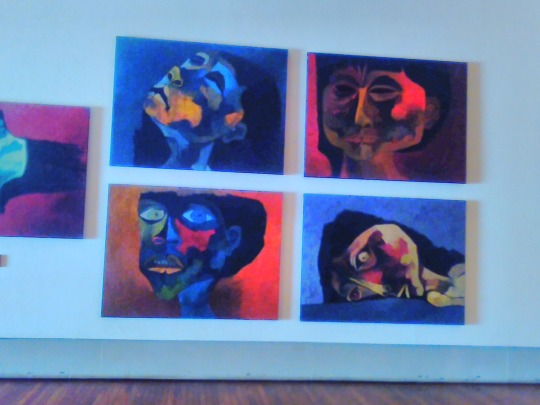

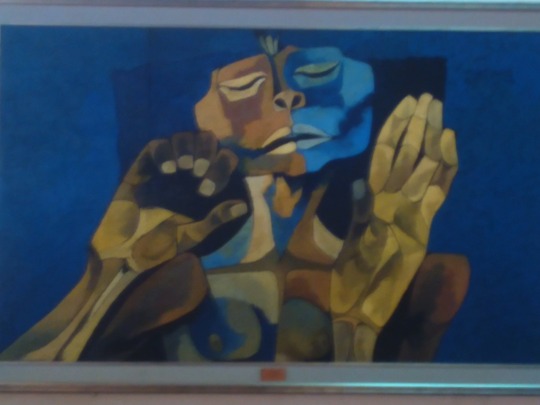
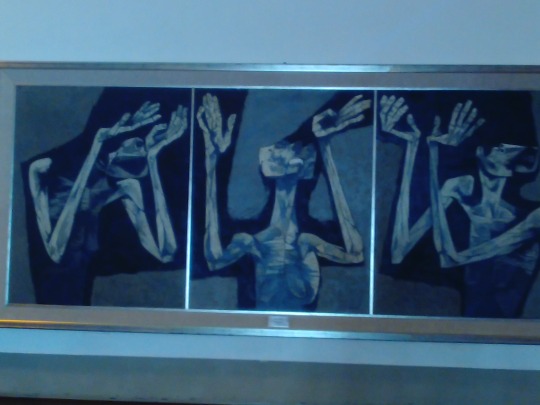

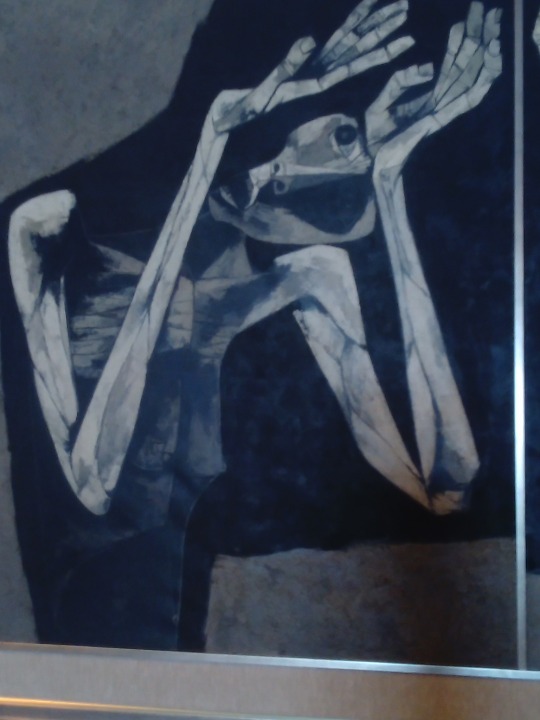

le guitariste de flamenco, Paco de Lucia
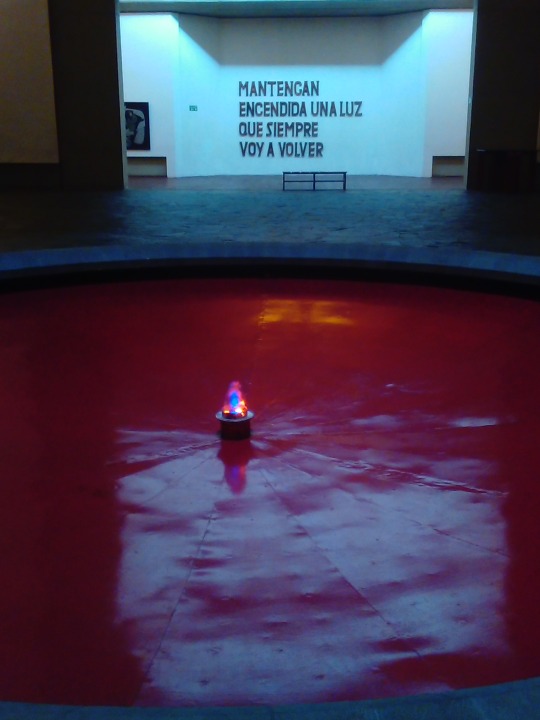
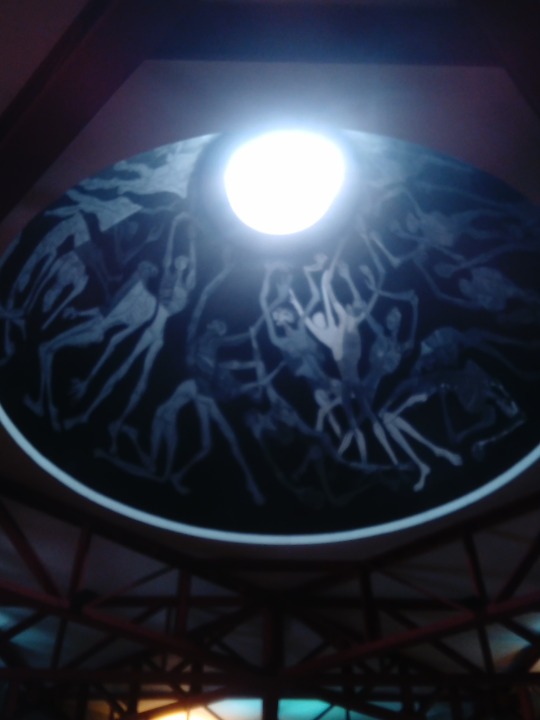
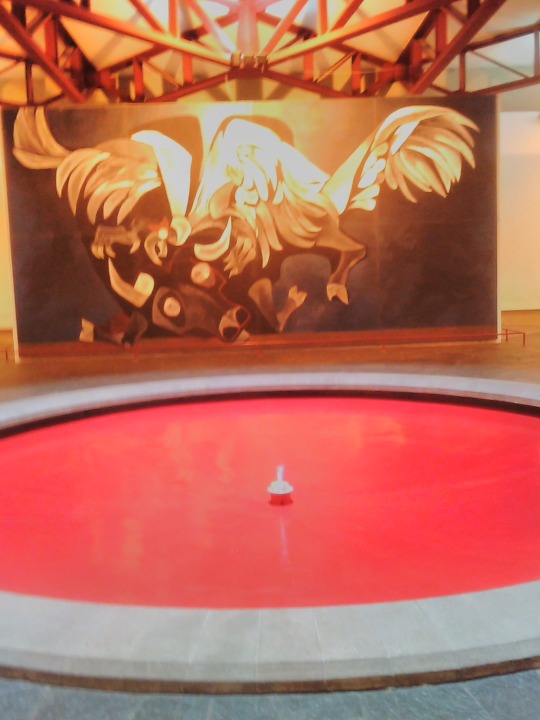


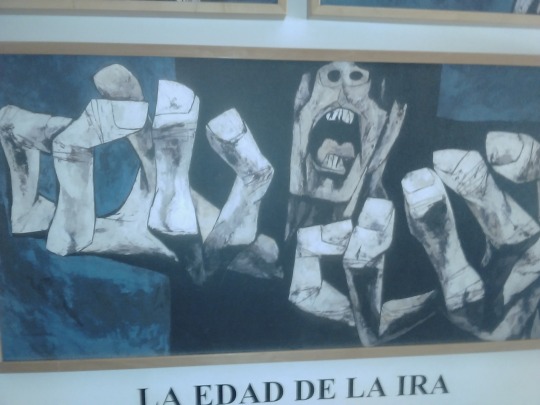
dimanche 21 octobre 2018
Cuenca, Equateur
1 note
·
View note
Photo

Ecuador, country of northwestern South America. Ecuador is one of the most environmentally diverse countries in the world, and it has contributed notably to the environmental sciences. The first scientific expedition to measure the circumference of Earth, led by Charles-Marie de La Condamine of France, was based in Ecuador. Moreover, research in Ecuador by the renowned naturalists Alexander von Humboldt of Prussia and Charles Darwin of England helped establish basic theories of modern geography, ecology, and evolutionary biology. Ecuador has a rich cultural heritage. Much of what is now Ecuador came to be included in the Inca empire, the largest political unit of pre-Columbian America.
Economically, Ecuador became known for exporting Panama hats (straw hats so named because they were shipped to Panama in the mid-18th century and bought by traveling gold seekers and because they were worn by Panama Canal work crews in the early 19th century) and agricultural products, notably cacao (the source of cocoa beans), bananas, and flowers. It is a major exporter of petroleum and an increasingly important tourist destination. Its history has been marked by political and economic challenges, including long periods of military rule, boom-and-bust economic cycles, and inequitable distributions of wealth. Ecuador is unusual among Latin American countries in having two major centres of population and commerce, the vibrant port city of Guayaquil acting as a counterbalance to the capital, Quito, located in the Andean highlands in the north-central part of the country.
Ecuador is a country of enormous economic potential. Development has focused on agricultural, marine, and mineral resources, with industry playing a more limited role. The subsequent production of primary goods has been subject to cycles of boom and bust, however, and Ecuador has sought to diversify its resource exports and to seek new markets. The country has improved standards of living, but it is still characterized by marked inequalities of wealth and well-being.
Industrial development in Ecuador is still in the early stages. Some industry is associated with the processing of primary products, including cement, refined sugar, chocolate bars, beer, pasta, bread, meat, fruit, and instant coffee. Some import-substitute industries licensed by foreign corporations have been established, including those producing pharmaceuticals and tires and those assembling automobiles. Ecuador has had some success exporting processed foods, such as fruit drinks and canned meats, to neighbouring countries. Ecuadoran woolen tapestries and sweaters; crafts in wood, straw, ceramics, leather, and tagua nut (used to make vegetable ivory); and Panama hats contribute to the economy. A textile industry focusing on the manufacture of sweaters and other clothing has developed in Atuntaqui in the northern highlands, but it faces competition from cheap Chinese textile imports.
Oil and gold are the country’s most valuable extraction products. Gold has been produced in Ecuador for centuries, and much of the production comes from remote districts such as Nambija in southeastern Ecuador, where thousands of families live with minimal services and the miners face hazardous conditions in tunnels subject to collapse due to torrential rains. Oil extracted in the northeast and sent over the Andes via pipeline has become Ecuador’s major mineral export, accounting for about two-fifths of export earnings and one-third of tax revenues. The state oil company operates in consortia with private and foreign corporations. Ecuador was a member of the Organization of Petroleum Exporting Countries (OPEC) but withdrew in 1992.
Exports include crude oil and derivatives, shrimp, bananas, coffee, cut flowers, cocoa, and Panama hats. Ecuador’s principal export destinations are the United States, Peru, China, Chile, and Panama. Imports include machines and primary industrial materials, motor vehicles, consumer goods, and food and chemical products. Imports come mainly from the United States, China, Colombia, Panama, and Brazil.
Finally, I will leave a link which includes all companies and enterprises in Ecuador, for those who want to research and discover more about this country. Thanks for reading.
All businesses address in Ecuador: https://findsun.net/EC
0 notes
Photo

Portrait of Charles-Marie de la Condamine (1701-1774), Unidentified Artist, 19th century, Harvard Art Museums: Drawings
Harvard Art Museums/Fogg Museum, Bequest of Frances L. Hofer
Size: 27.4 x 20.5 cm (10 13/16 x 8 1/16 in.)
Medium: Red crayon on cream antique laid paper
https://www.harvardartmuseums.org/collections/object/295385
0 notes
Photo
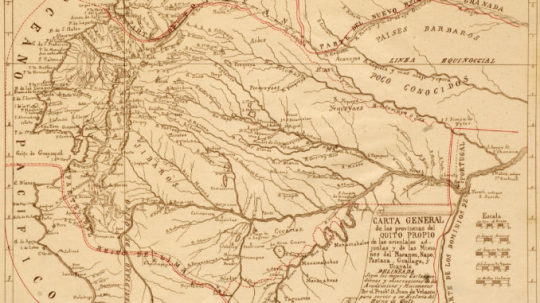
Tenemos que el primer en dibujo del mapa de la Real Audiencia de Quito estuvo bajo la dirección de Charles Marie de La Condamine en el año de 1750.
Este mismo mapa tuvo una nueva impresión bajo la orden de Pedro Vicente Maldonado realizado por un cartógrafo oriundo de la ciudad de Riobamba, el cual era geógrafo, matemático, naturalista, físico, astrónomo y político, que participó en la Misión Geodésica franco-española de 1734 a 1736.
Fue considerado por el geógrafo, astrónomo y naturalista alemán Alexander von Humboldt como la obra más cabal que se conoce respecto a la representación de un territorio ultramarino en aquella época.
Juan Felipe Cárdenas
0 notes
Text
Location to Equator
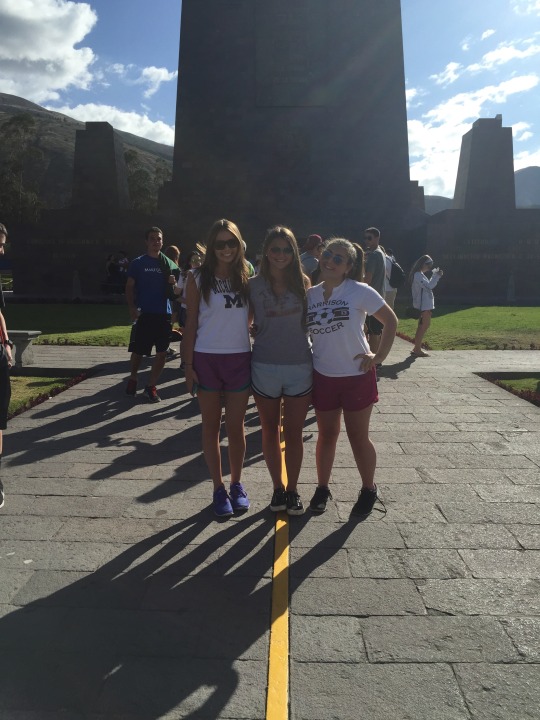
Located north of the Quito is a small city, La Mitad del Mundo, that is known to attract tourists from all over the world. La Mitad del Mundo, which translates to “middle of the earth,” offers visitors the opportunity to learn more about Ecuador’s culture and the equator, or just take some pictures and enjoy the views.
This monument commemorates the first Geodesic Mission of the French Academy of Sciences. In 1736, Louis Godin, Pierre Bouguer, and Charles Marie de La Condamine first determined the equatorial line.
The Itinan Solar Museum has activities that encourage visitors to take part in different experiments that are designed to show the effect of the equator. Some of these activities include balancing an egg on a nail and flushing water.
The Coriolis Effect is demonstrated by displaying different sinks to show how the water flows straight down rather than whirling first. Also, visitors are challenged to balance an egg on a nail because on the equator the yolk settles straight down.
Tourists also can gain insight into Ecuadorian indigenous culture by entering two huts that have people teaching visitors about rituals and values and answering questions. In addition to huts, there is live music and folklore dancing which gives further insight into the Ecuadorian culture.
This must-see attraction provides visitors with the total package.
https://gringosabroad.com/la-mitad-del-mundo-the-middle-of-the-world-in-ecuador/
0 notes
Text
Diez genios que han demostrado que la lotería no (solo) es cuestión de suerte
Teorías de probabilidad, leyes matemáticas o fallos en los sistemas de juegos son algunos de los métodos que a lo largo de la historia han utilizado varios ganadores de la lotería que han sabido aprovechar sus conocimientos. El caso más antiguo del que se tiene conocimiento tuvo lugar en el año 1729, cuando el matemático Charles Marie de La Condamine descubrió, junto al mismísimo Voltaire, que el nuevo sorteo de la lotería propuesto por el Estado tenía algunos errores.
etiquetas: lotería, suerte
» noticia original (www.cookingideas.es)
0 notes
Text
Rubber Stamping
Thirty- 4 years after, Charles Marie de la Condamine sent out a plan of how-to-care-for-rubber to his house which the creator of oxygen, Joseph Priestly, saw. By 1770, the unique concept of “peaux de negres” which is cleaning pencil smears with small cubes of hydrocarbon polymer, was born.
There were some people in the past who found that rubber can be utilized well as an epoxy representative particularly, when they attempted to connect plumes to their skin. One publication that was provided in June 1918 composed that “rubber marking was produced a hundred years back by tribal locals from South America for the printing of physical patterns.”
Little to the understanding of a French researcher by the name of Charles Marie de la Condamine that a sample of Indian rubber he forwarded to the Institute de France in 1736, would end up being remarkable. Prior to the occasion, explorers from Spain discovered that tribal locals from South America had a fantastic time romping with a sticky compound that was currently capable of marking. They ended up being curious however it did not inspire their clinical impulse to feed their inquisition of what would be called rubber marking today.
In 1839, while Charles Goodyear was doing his typical activities in the cooking area, he unintentionally positioned some rubber mixed with sulphur above a steaming range. By 1860, he passed away leaving the entire world a tradition of what is now rubber marking.
When the news about the predicament reached the ears of Charles Goodyear, he was consumed on how to supply option which at that duration was not yet acknowledged as rubber marking. Investing how numerous hours integrating strange brews of hydrocarbon polymer with salt, castor oil, pepper and lots of others, his ordinary life was tired in numerous experiments where in the long run, he was sent to prison for failure to pay the financial obligations sustained.
0 notes
Text
Rubber Stamping
In 1839, while Charles Goodyear was doing his normal activities in the kitchen area, he unintentionally positioned some rubber combined with sulphur above a steaming range. By 1860, he passed away leaving the entire world a tradition of what is now rubber marking.
Little to the understanding of a French researcher by the name of Charles Marie de la Condamine that a sample of Indian rubber he forwarded to the Institute de France in 1736, would end up being extraordinary. Prior to the occasion, explorers from Spain discovered that tribal locals from South America had a terrific time romping with a sticky compound that was currently capable of marking. They ended up being curious however it did not inspire their clinical impulse to feed their inquisition of what would be called rubber marking today.
Thirty- 4 years after, Charles Marie de la Condamine sent out a bundle of how-to-care-for-rubber to his house which the creator of oxygen, Joseph Priestly, saw. By 1770, the unique concept of “peaux de negres” which is cleaning pencil smears with small cubes of hydrocarbon polymer, was born.
There were some people in the past who found that rubber can be used well as an epoxy representative specifically, when they attempted to connect plumes to their skin. One publication that was provided in June 1918 composed that “rubber marking was produced a hundred years back by tribal locals from South America for the printing of physical patterns.”
When the news about the problem reached the ears of Charles Goodyear, he was consumed on how to offer service which at that duration was not yet acknowledged as rubber marking. Investing how lots of hours integrating strange brews of hydrocarbon polymer with salt, castor oil, pepper and numerous others, his ordinary life was tired in numerous experiments where in the long run, he was put behind bars for failure to pay the financial obligations sustained.
0 notes
Photo

Ecuador 🇪🇨 Quito --------------------------------------------------------------------------------------------------------------------------------------------------------------------- 🇬🇧 "Near the town of San Antonio, 22 km north of Quito, we reach the place where in 1736, the expedition, led by Charles-Marie de la Condamine, made the measurements that showed that this was actually the equator: latitude 00 ° 00 '. " ⏱️⏱️⏱️⏱️ This is the real half of the world. 🌐🌐🌐🌐 Have you ever walked along the Equator line? 🥖🥖🥖🥖 [taken from our travel diary 📙] ● ● ● ● ● ● ● ● ● 🇮🇹 "Vicino alla cittadina di San Antonio, 22 km nord di Quito, raggiungiamo il luogo in cui nel 1736, la spedizione guidata da Charles-Marie de la Condamine, effettuò le misurazioni che dimostrarono che questo era effettivamente l’equatore: latitudine 00° 00’." ⏱️⏱️⏱️⏱️ La metà del mondo! 🌐🌐🌐 Vi è mai capitato di passeggiare lungo la linea dell'Equatore? 🥖🥖🥖🥖 [tratto dal nostro diario di viaggio 📙] ● ● ● ● ● 🌍🌎🌏🌍🌎🌏 Follow us guys! •••••••••••••••• 🌍🌎🌏🌍🌎🌏 Visit us on: Www.born2travel.it ••••••••••••••• 🌍🌍🌍🌍🌍 ● ● ● ● ● ● ● #born2travelit #ecuador #colombia #guayaquil #venezuela #chile #argentina #quito #peru #mexico #espa #panama #travel #like #love #usa #brasil #photography #travel #miami #uruguay #cuenca #bolivia #follow #puertorico #igersecuador #instagood #bogota #mitaddelmundo (presso Quito, Ecuador) https://www.instagram.com/p/Bvtku8TFFoN/?utm_source=ig_tumblr_share&igshid=x6m1u824u41m
#born2travelit#ecuador#colombia#guayaquil#venezuela#chile#argentina#quito#peru#mexico#espa#panama#travel#like#love#usa#brasil#photography#miami#uruguay#cuenca#bolivia#follow#puertorico#igersecuador#instagood#bogota#mitaddelmundo
0 notes